How to choose patio doors — maximise your garden view and add the wow factor to your home with these expert tips
Expert tips on how to choose patio doors

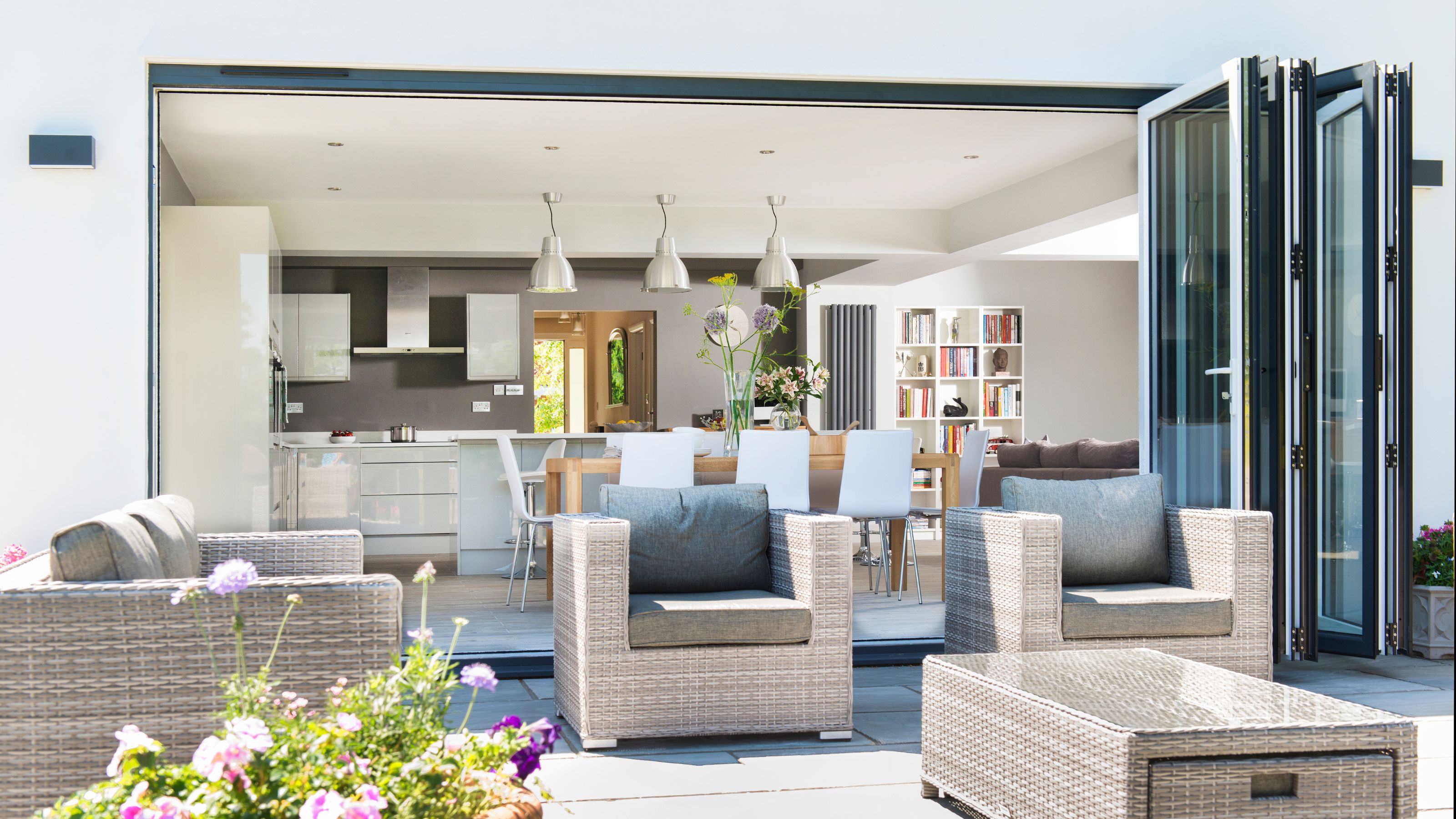
Struggling to understand how to choose patio doors for your home? While these types of doors are undeniably beautiful features to incorporate into pretty much every style of property, getting the openings just right is hugely important if you want them to be a positive addition.
There is now so much choice out there, from classic French doors to popular bifold doors or massive swathes of near-frameless sliding doors that it can be hard to know where to start. You might even find yourself stuck on the bifold vs sliding doors debate, unsure of which is the best choice for your home.
'The term ‘patio door’ covers a wide range of different styles of door, each with different methods of opening and each better suited to certain sizes and locations than others,' says Edward Stobart, technical sales manager at IDSystems. 'One thing that connects all of the different door types is that they are ideal for bringing lots of natural light into your home and helping to break down the boundaries between inside and out.'
Our handy guide is here to explain each and every factor you'll need to consider when buying these types of patio doors, including all the options as well as what they are likely to cost you.
What types of patio doors can you choose from?
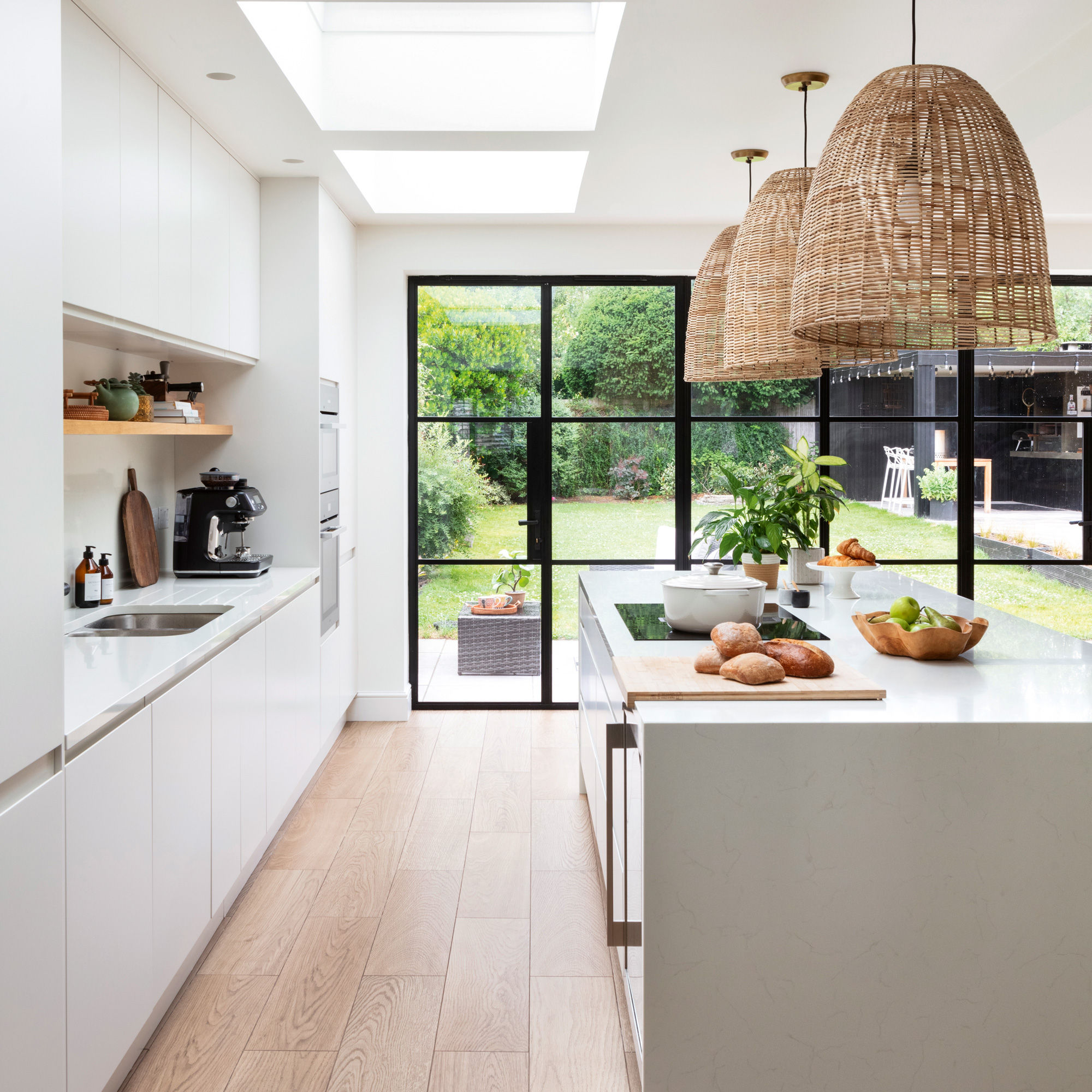
There was a time when French doors were the only choice available to homeowners wanting to add glazed doors leading to their outdoor spaces. These days, however, there is a much greater range on offer.
'Over the past decade, the choice of styles has grown dramatically, in terms of the type of door system, how they open and what they are made from – making choosing the right patio door for your project more complex than ever before,' says Edward Stobart.
There are generally three types of patio door on offer to homeowners: French, sliding and bifold doors. But a combination of bifold and sliding is also becoming increasingly sought after.
Sign up to our newsletter for style inspiration, real homes, project and garden advice and shopping know-how

A long serving member of the IDSystems team, for the past 20 years Edward has advised and supported self-builders and renovators to identify the most suitable glazing options for their project. He has recently finished a complete renovation and remodel of his own home, transforming a tired 1960s house into a stylish modern family home.. His expertise ensures that each project is equipped with cutting-edge, bespoke glazing designs that enhance both functionality and aesthetics.
French doors
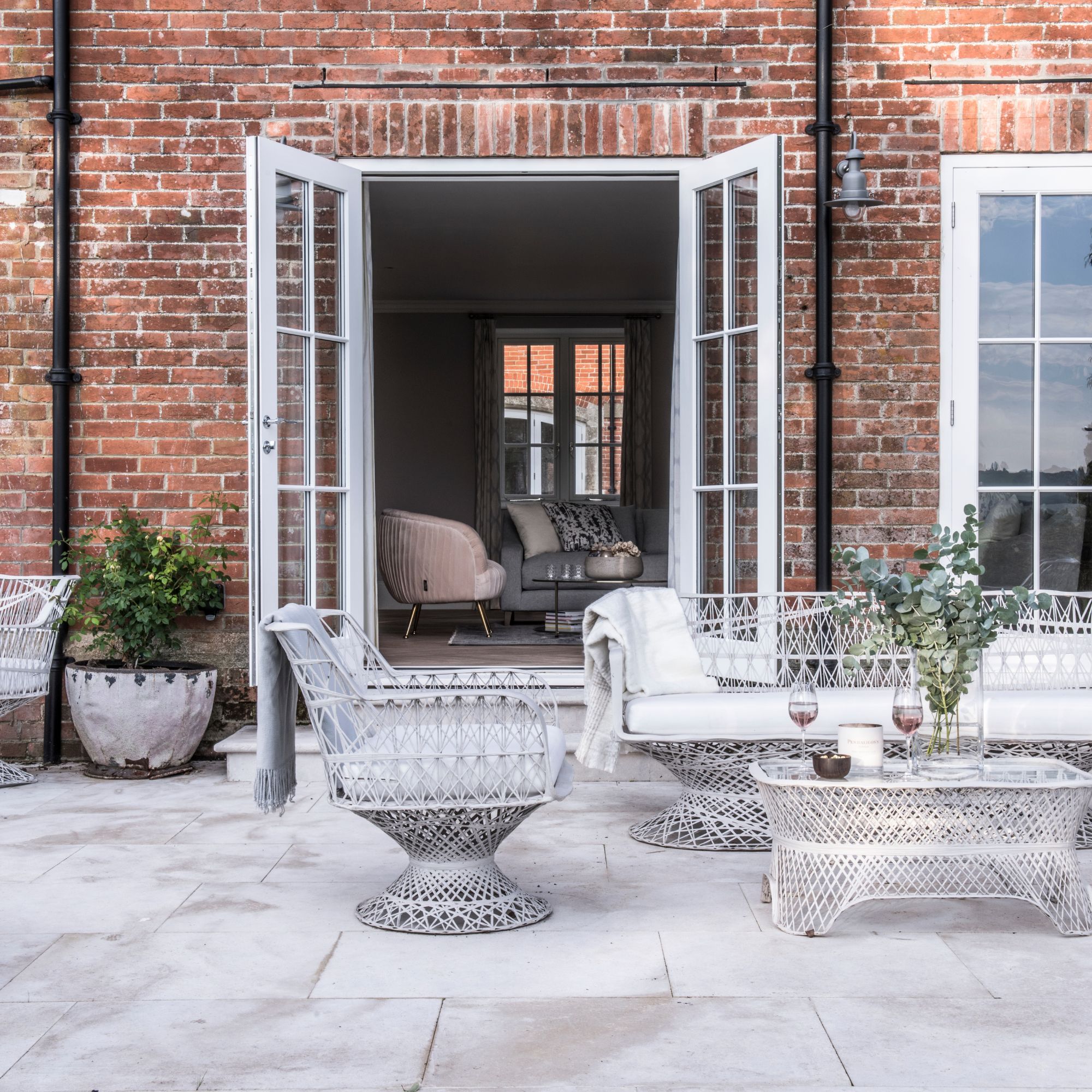
The original patio door – and still one that has much going for it today. 'Ideal for smaller apertures, French doors are a familiar sight in UK homes and feature a double set of doors that open outwards to connect the house and garden,' explains Edward Stobart. 'French doors can be installed on their own or within a larger area of glazing incorporating fixed frame windows beside and/or above the doors.'
'A style that well and truly never dates, French doors are a classic design that look beautiful in all settings,' says Matt Higgs, managing director of Kloeber. 'Whether it’s a period cottage or a modern self-build, this style of patio door will add a classy touch to your property.'

Matt is managing director of joined the Kloeber team in 2009. Kloeber specialises in made to measure external bifold, sliding and French glass patio doors, exterior entrance and front doors and bespoke windows.
Bifold doors
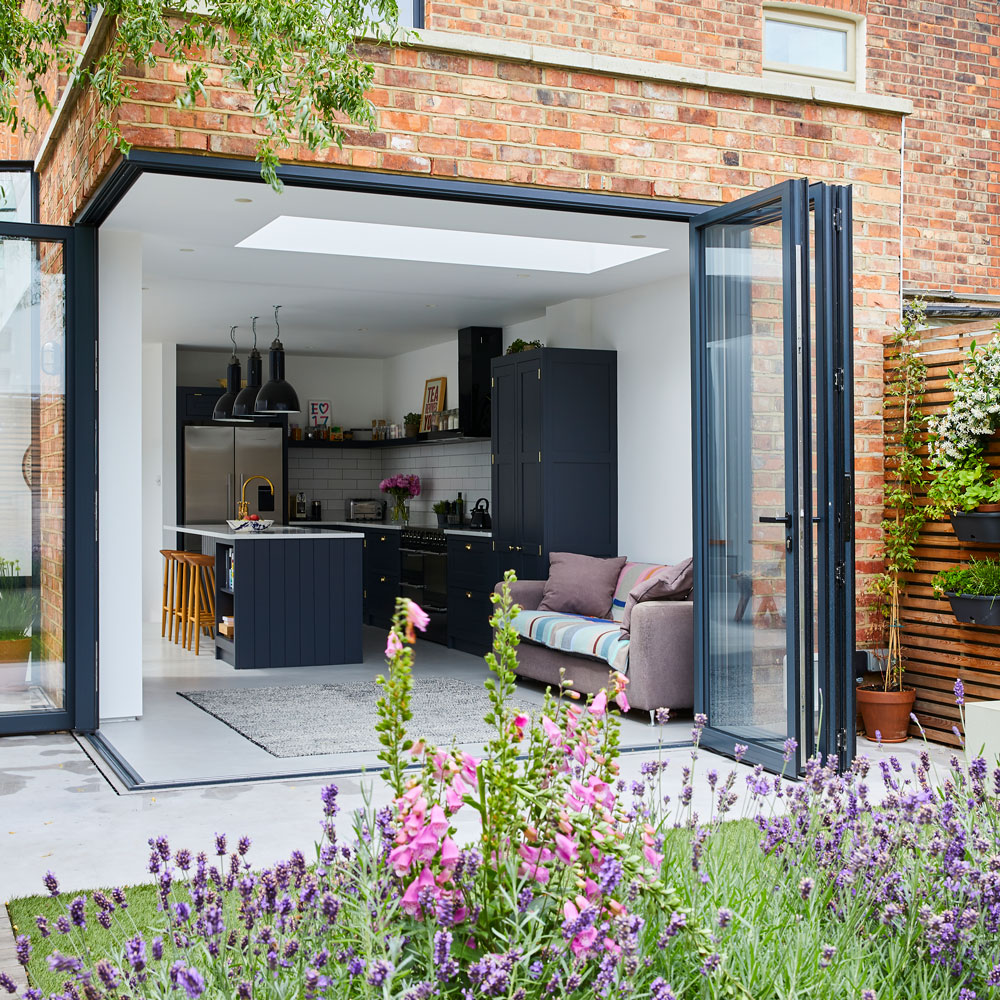
'When bifold doors first hit the UK market 25 years ago they were a radical solution compared to previous generations of patio doors,' explains Edward Stobart. 'Their ability to fold and stack to one or both ends to create a completely unobstructed opening was unlike anything seen before and it revolutionised the connection between homes and gardens – helping to extend living spaces outside in warm summer months.'
'It’s no secret that bifold doors have exploded in popularity, thanks to their wow factor and ability to help you achieve that seamless transition from inside to out,' says Matt Higgs. 'The ability to open up and join your two spaces is perfect when entertaining. Configurations are also flexible, giving you a choice of opening direction, panel numbers and also the ability to include a single opening door – handy for the colder months.'
But it's worthwhile researching the alternatives to bifold doors that could help you achieve a similar look.
Sliding doors
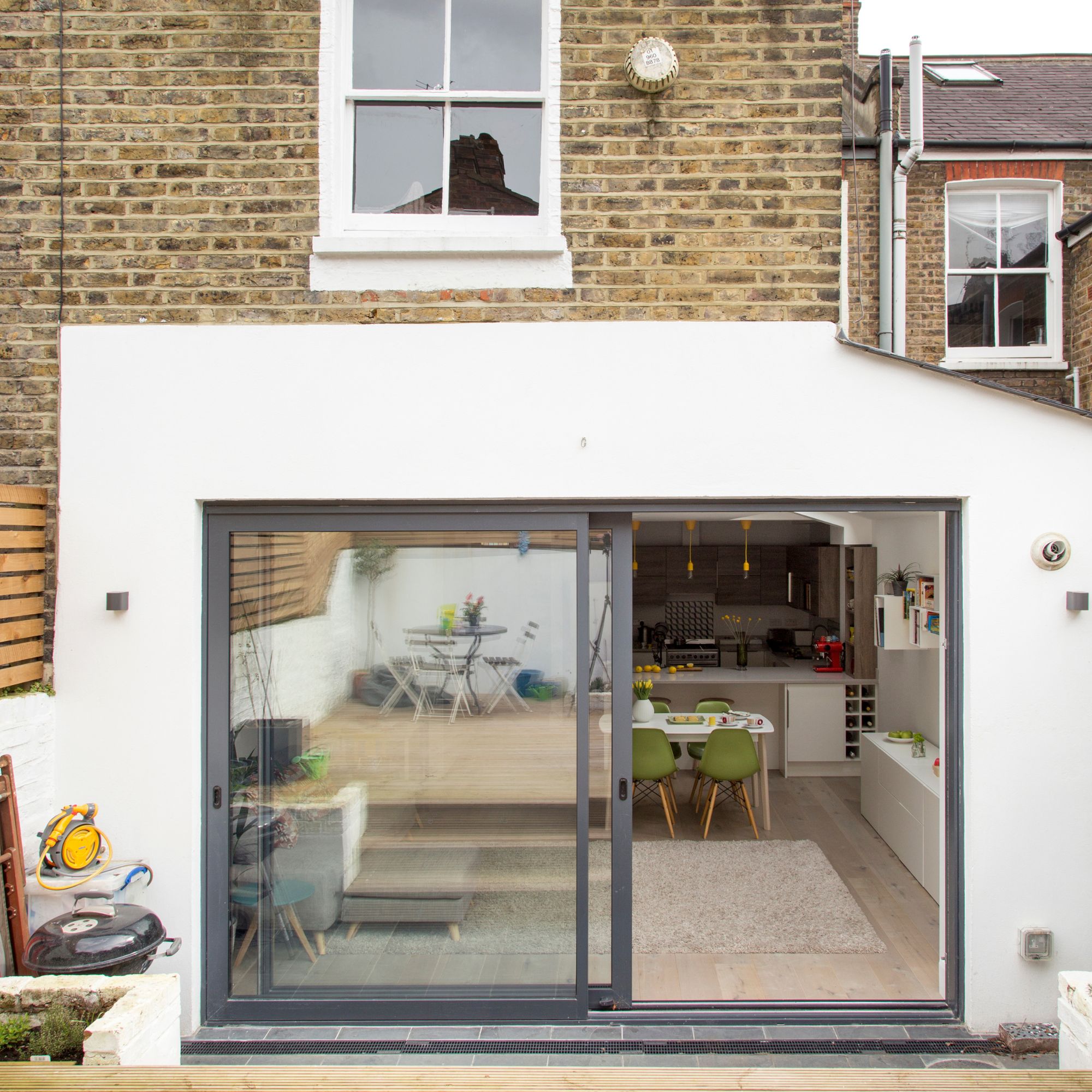
Sliding doors seem to currently be winning in the patio door popularity stakes – and it isn't hard to see why.
'While bifold doors have reduced in popularity, demand for sliding doors has rocketed,' reveals Edward Stobart. 'Their ultra-narrow frames and huge glass panels are ideally suited to the British climate – allowing homeowners the connection between inside and out during summer, while maintaining the opportunity to maximise the views out and keeping the weather outside for the rest of the year.
'With panels up to a massive six metres wide and frames as slim as just 20mm, sliding doors can provide almost uninterrupted views out and even be designed with panels that slide into a pocket in the wall to hide them completely away when open,' adds Edward.
Slide and turn doors
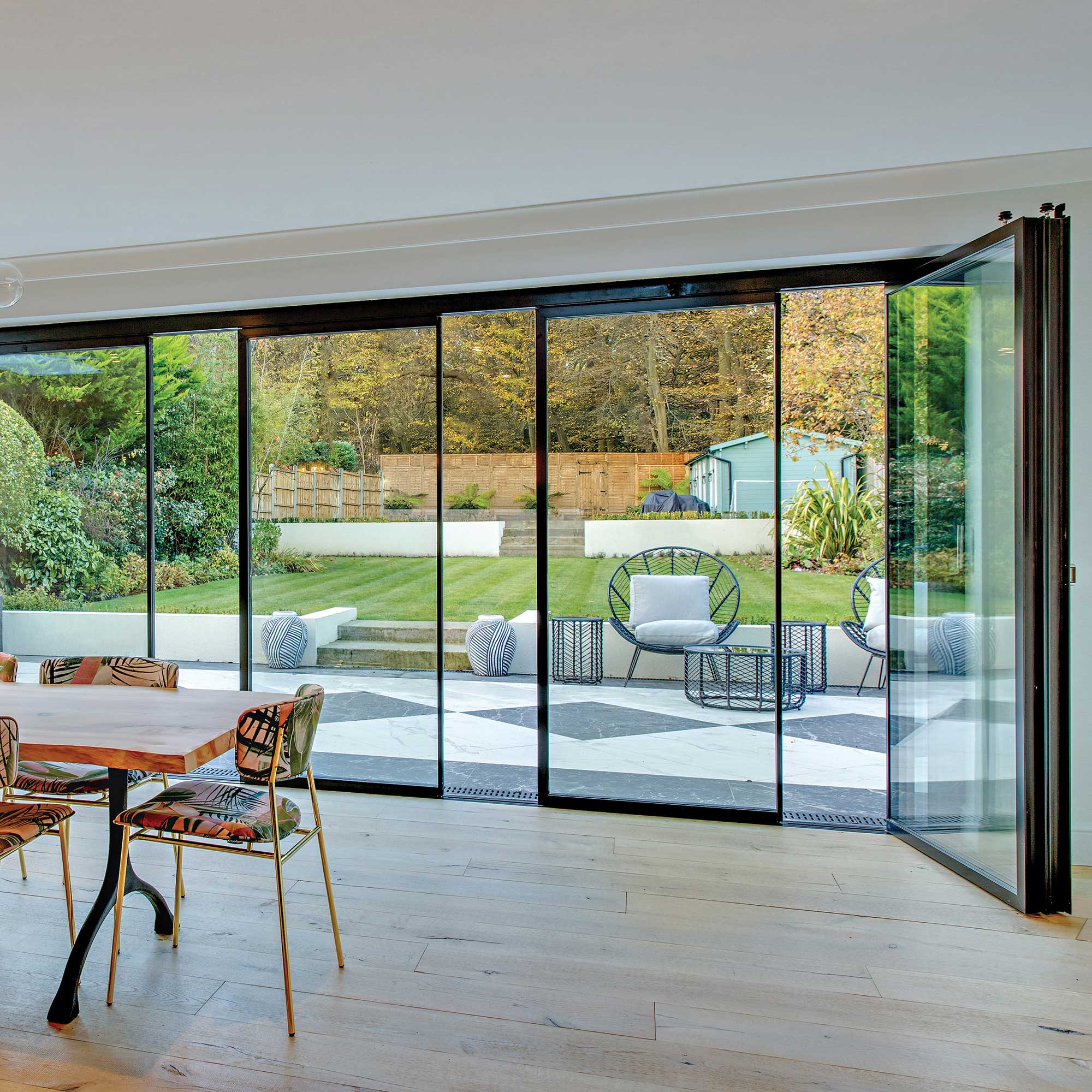
Something of a new kid on the block, slide and turn doors are also well worth considering as an addition to both your patio ideas as well as in terms of how they could transform your home internally.
'The most recent addition to the choice of patio doors, slide and turn doors offer a combination of the most popular elements of both bifold and sliding doors,' explains Edward Stobart. 'With narrow frames like sliding doors, but with the ability to slide and stack the panels at one end to create unobstructed openings like bifolds, slide and turn doors have become a hugely popular option for homeowners struggling to choose.
'Designed with individual, non-connected panels, slide and turn doors offer flexibility when open, allowing you to open any number of panels or leave gaps between them for ventilation if required.'
Which materials are best for patio doors?
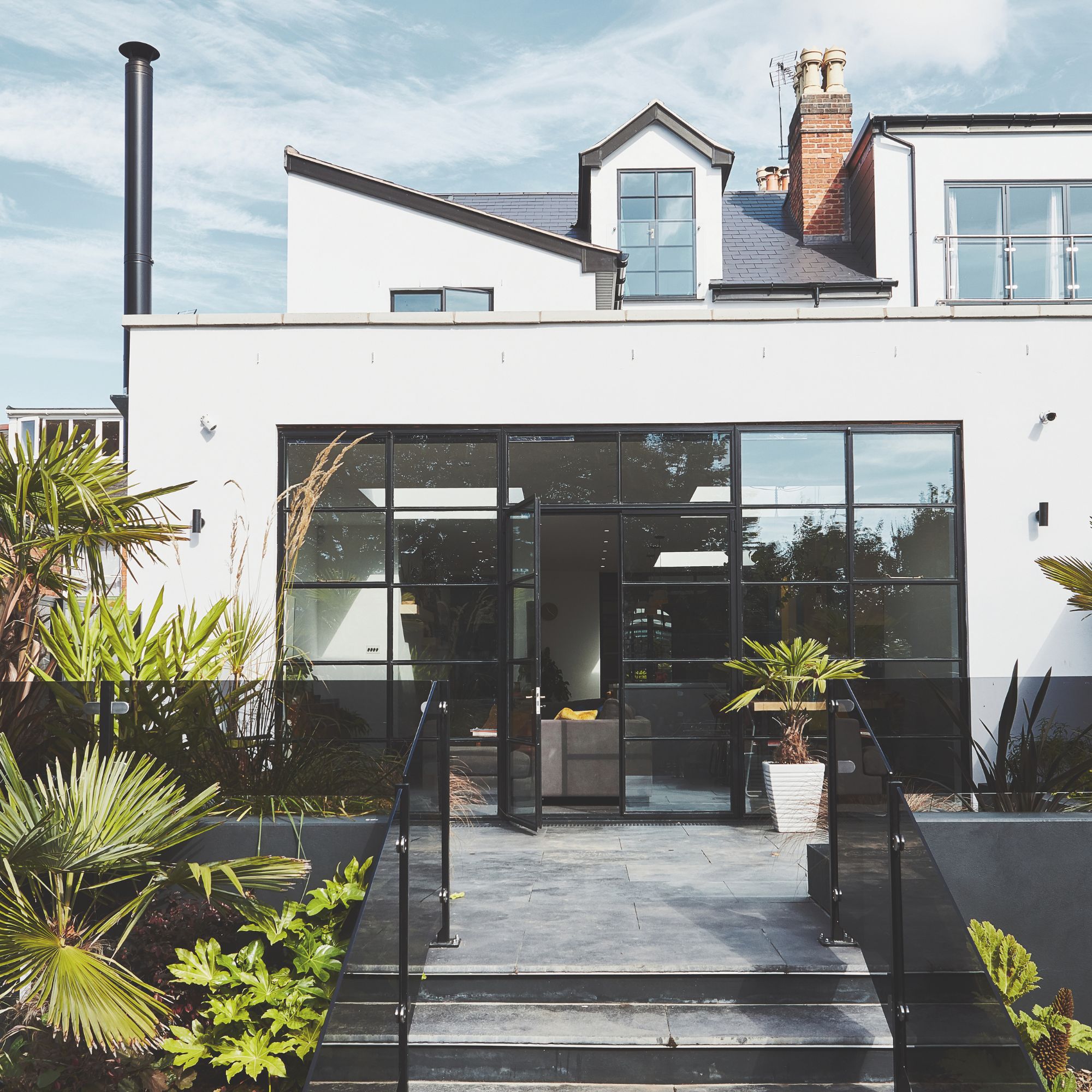
Just as when selecting replacement windows, once you have decided on the type of patio doors that will best suit your home and requirements, you will need to decide on materials.
The three main choices are uPVC, timber and aluminium – not forgetting composite, which combine internal timber frames with aluminium externally.
While timber is often seen as a very traditional material that requires lots of maintenance, modern innovations have meant homeowners can now enjoy the natural beauty of wood without having to invest too much time in its upkeep. Owners of period properties looking at how to pick the perfect windows in particular should consider timber as a patio door material as it will tie in nicely with original windows.
'Over the years, timber has not always had the best reputation due to concerns of shrinking, warping and general wear,' says Matt Higgs. 'However, thanks to products like our engineered timber, you don’t need to worry about this. It’s stronger and more stable than normal timber. Our advanced microporous paint system also means doors do not require annual re-painting.'
Aluminium patio doors, as well as composite, are now a hugely popular option. 'The go-to option has become aluminium,' says Edward Stobart. 'It’s innate strength and rigidity make it ideal for all types of door style – while modern thermal break technology has significantly improved the thermal efficiency of the material compared to aluminium frames of 30-40 years ago.'
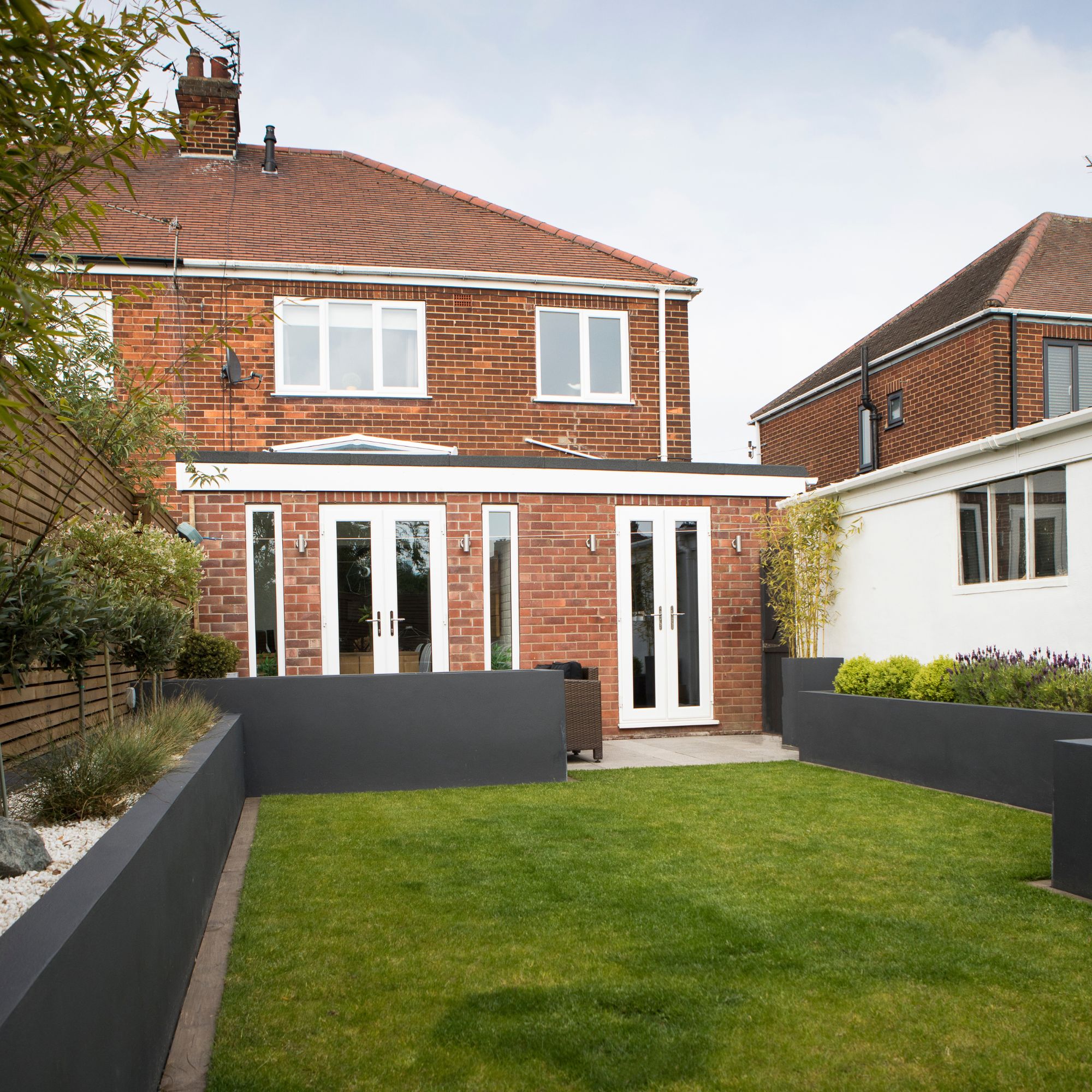
And, finally, uPVC, a material that has slightly fallen from favour in more recent years. 'Over the years, French doors have predominantly been manufactured from uPVC but more and more homeowners are opting for aluminium framed systems which can allow for larger door sashes with thinner frames – and therefore more glass,' explains Edward Stobart.
'For entry level systems, uPVC remains a cost-effective solution, but its relative flexibility means it is far from ideal for bifold or slide and turn systems, while its chunkier frames make it unsuitable for larger sliding door panels.'
What type of glazing is best for patio doors?
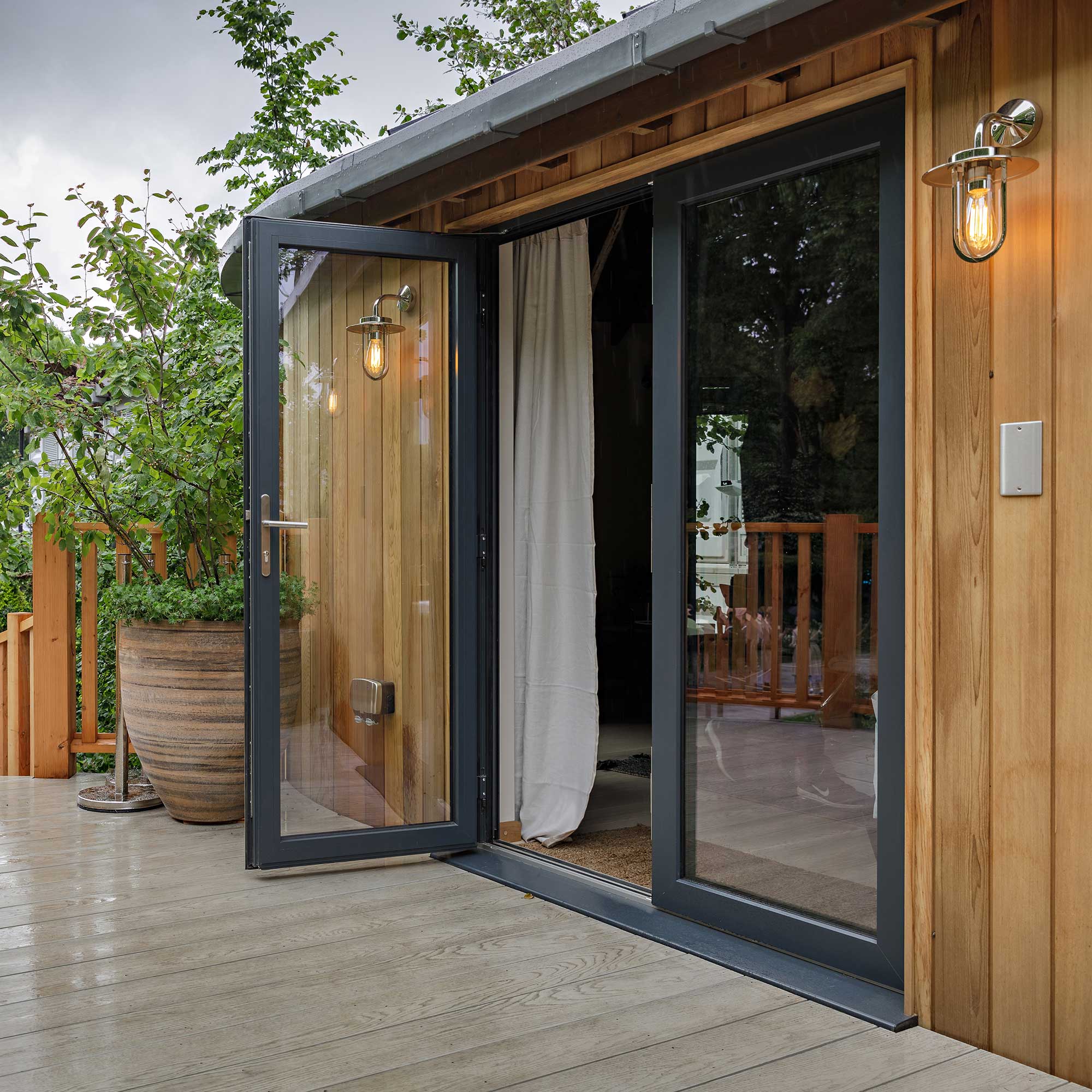
When it comes to the glazing you choose for your patio doors you will have the choice between double and triple glazing.
As the names suggest, double glazing is made up of two panes of glass, while triple features three. The gaps between the panes is filled with an inert gas – often argon.
While triple glazing is more thermally efficient than double, meaning your home will stay warmer in winter and cooler in summer, if you are wondering how much does double glazing cost, it is worth noting that triple is more expensive. Triple glazing is also heavier, meaning more strain on the frame and hinges. That said, it also offers superior soundproofing so if your patio doors are facing a busy road this could well be your best option.
What size patio doors should I choose?
French, sliding and bifold doors all come in various sizes and you can either choose standard dimensions or have them custom made to your exact requirements.
French doors tend to be the best option for smaller openings, while sliding and slide and turn doors offer some of the greatest aperture sizes for something really dramatic – up to 24m wide in fact.
If you want to flood your space with natural light, then combining your patio doors with a well-placed picture window can be ideal.
How much do patio doors cost?
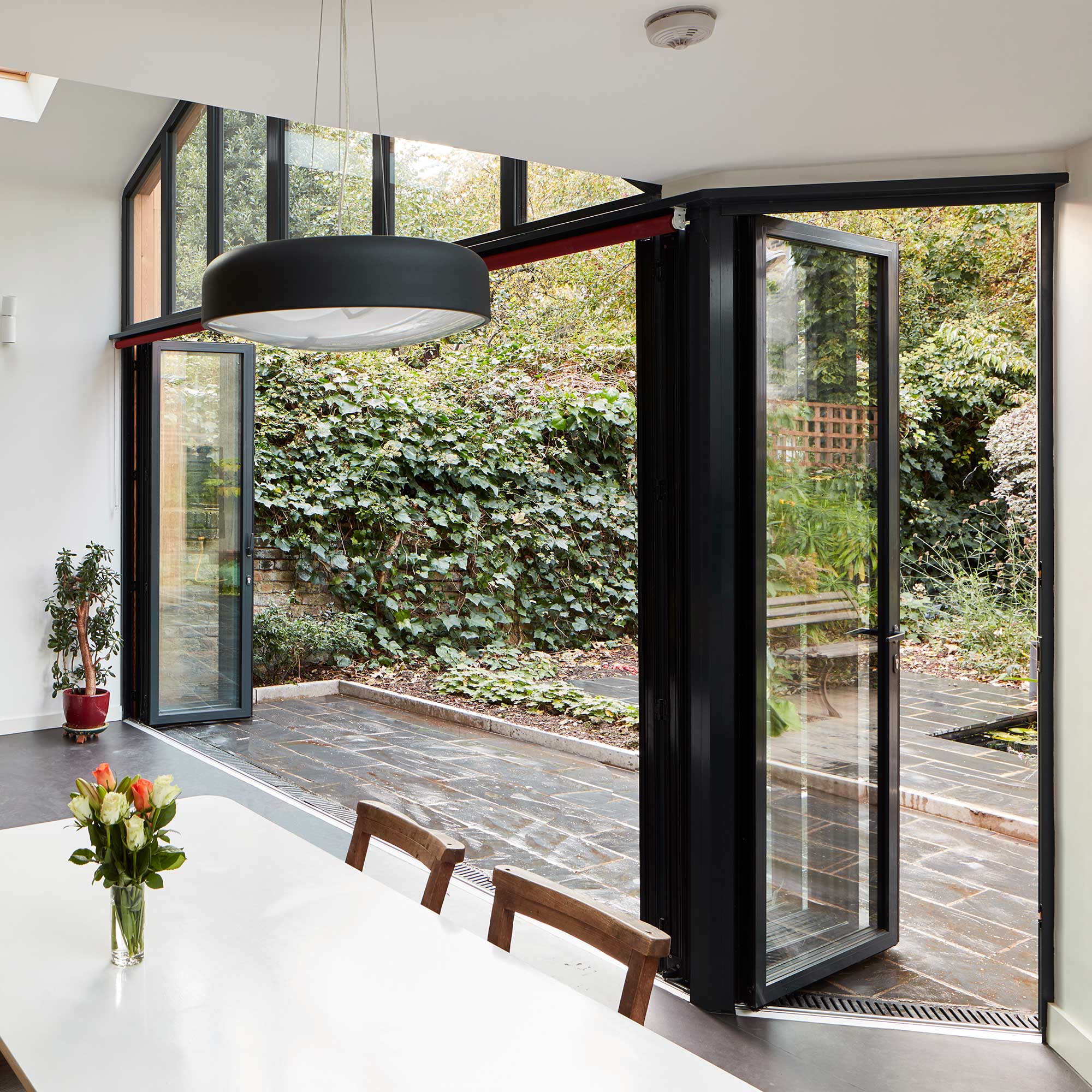
The cost of your patio doors very much depends on the type of door you choose as well as their materials and size – and don't forget that the types of glazing you opt for will also play a part.
French doors tend to be the cheapest option, and uPVC is the least expensive material. Starting prices for French doors come in at around £1,500 - £2,500, with Kloeber's most affordable French doors starting from £2,125 for their timber models.
Bifold doors lie next up on the price scale – Kloeber's aluminium two-panel K-Fold doors start at from from £1095 + VAT per panel.
Sliding doors sit right at the top, starting from £3,000 and easily rising to £5,000 or more.
What should I look for when buying a patio door?
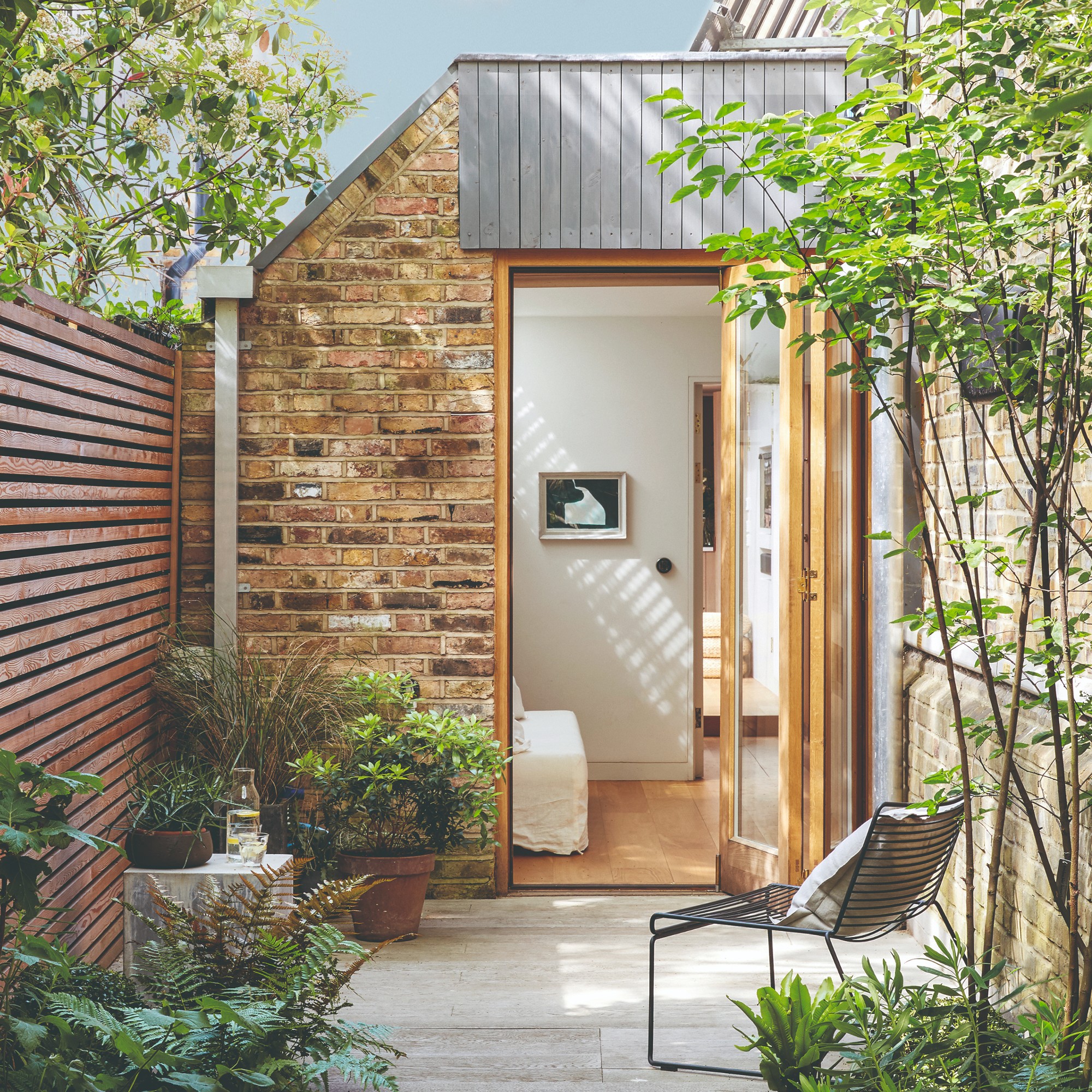
The very most important thing when selecting patio doors is to use a company with plenty of recommendations (personal if possible) and their warranties. You should also check out the quality of their doors, in person.
In addition, you should to keep in mind the style of your home and how the new doors will fit in. For example, just as you would want to look at traditional windows for period homes if your house is a character property, so too should you bear in mind how any patio doors will slide in with the architectural style of your home.
FAQs
How do you achieve a level threshold with patio doors?
Many homeowners are keen to achieve a level threshold between inside and out when installing their patio doors, but this is not always possible.
In many cases you will need to step over the threshold and there will be a small difference between the ground levels inside and out. This is not always wanted – not only does it not look as visually appealing as a level threshold, but it can also easily be tripped over.
'To achieve a threshold that is flush with the internal and external spaces on either side of the door you have purchased, the depth of this part of the door can be installed below the floor level,' explains Matt Higgs. 'Then, your finished floor inside of your home will be able to line up with the top of the threshold to create a seamless transition from inside to outside, removing the need to step over the threshold when walking outside. In some homes, this may mean taking out a course of bricks under your existing aperture, which is quite simple for any builder, but it is something that they should be aware of as soon as possible.'
What type of patio door is most energy efficient?
When opting for a new type of window or set of patio doors they need to be as energy efficient as possible if you want them to be a positive addition to your home that enhances the comfort levels you experience.
'With glazing products, including sliding glass doors, their energy efficiency is measured using a metric known as a U-value which is the measurement of heat transfer through the frames and glass,' explains Matt Higgs. 'The smaller the U-value, the better the glazing is at reducing heat transfer and thus, the more energy-efficient it is.
'It is also worth noting, to comply with building regulations on a new build, an extension or an alteration on a house, there are U-values that must be met,' continues Matt. 'For example, a door such as an external sliding door has to achieve a U-value of 1.6 W/m2K for a new build and a maximum 1.4 W/m2K for replacement doors in existing dwellings so make sure to ask your windows and doors supplier about the U-values of your new glazing.'
So, for those after energy saving tips, which types of patio doors are the most energy efficient?
'It could be argued sliding doors are less energy efficient than other patio doors because of their higher ratio of glass,' advises Matt Higgs. 'Although heat can transfer through frames, it is more likely to transfer through the glass as it is a less insulating material. As French and bifold doors typically have smaller panels of glass and more frames this tends to result in less glass as a whole which allows for less heat transfer.'
Once your new patio doors have been installed, keep them sparkling by learning how to clean windows outside properly.

Natasha has been writing about everything homes and interiors related for over 20 years and, in that time, has covered absolutely everything, from knocking down walls and digging up old floors to the latest kitchen and bathroom trends. As well as carrying out the role of Associate Content Editor for Homebuilding & Renovating for many years, she has completely renovated several old houses of her own on a DIY basis.